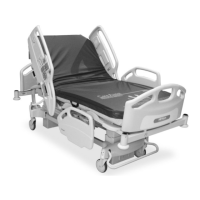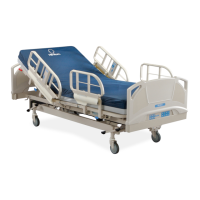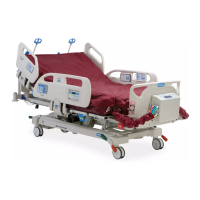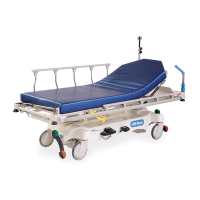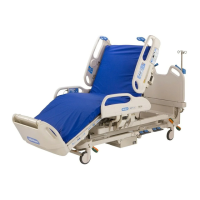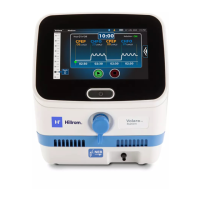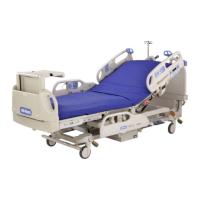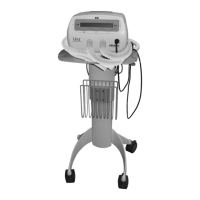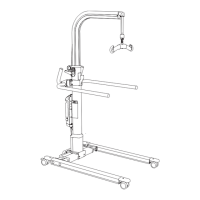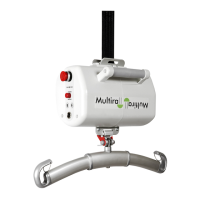Electrical System (B Model and Newer Beds)
Chapter 3: Theory of Operation
Page 3 - 16 CareAssist® and CareAssist® ES Bed Service Manual (MAN330 REV 4)
Management of the Motors
The motor control signals are supplied by the motor control P.C. board. Their
extreme positions are detected in series by upper and lower internal end-of-
travel (EOT) devices. These devices directly cut off the power supply for the
head section, knee section, and foot section actuators. In addition, the knee
section and foot section motors have intermediate internal microswitches to
control the automatic contour and Dining Chair® Position.
The two hilow columns also have upper and lower internal EOT devices. For
safety reasons, they are both backed up at each end. If one of these safety
devices is activated, the column cannot be used; however, the other functions
remain operational.
Complementing these EOT devices, the overload limiting function of the
power supply unit provides protection in the event of mechanical failures,
obstacles, or overload.
Detection of Bed Not in Low Position
This type of detection is obtained by taking into account the state of the low
EOT of the hilow columns. The motor control P.C. board controls the
corresponding indicator as soon as one of the two EOTs is released.
Automatic Contour
The motor control P.C. board, upon receiving a command from the control
unit, controls the automatic contour (head section and knee section) operation
of the bed. This function is carried out through an intermediate switch of the
knee section actuator. When the Head Up function is activated while in the
horizontal position, the head section and knee section rise until the
intermediate internal microswitch of the knee section actuator cuts its power at
approximately 20°. The head section actuator continues to operate until it
reaches its upper EOT or its control is released. When the Head Down function
is activated and the head section reaches the low position, the knee section
actuator continues operating until it reaches its lower EOT or its control is
released.
Dining Chair® Position
The Dining Chair® Position function combines the movements of the bed
frame sections and uses the intermediate internal microswitches of the knee
section and foot section motors to control the interaction between these two
sections.
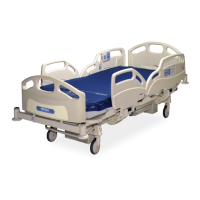
